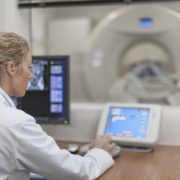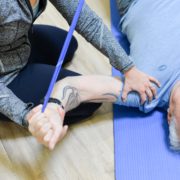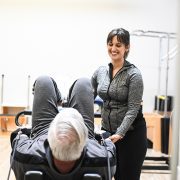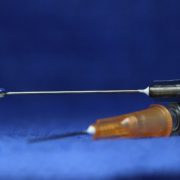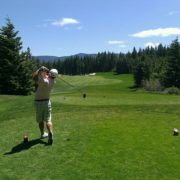The Hidden Risks of Relying on Back MRIs
If you’ve ever experienced acute or chronic back pain, or perhaps you’re suffering right now, you’ve likely wanted to “see inside” to know what’s going on.
You’re not alone.
Many people share this desire, and most medical doctors agree with this approach. But what if I told you that getting a back MRI too soon could actually lead you to more (and often unnecessary) injections, procedures, and even surgery?
What if I told you that 80% of all types of back pain, even debilitating sciatica, can be resolved naturally?
This isn’t just my opinion. The research shows that getting an MRI for back pain too early may actually lead to more invasive treatments – like injections, procedures, or surgeries – which can do more harm than good in the long run. Moreover, relying on MRI results alone to determine your treatment plan often steers people away from natural, non-invasive treatments that could effectively manage, or even resolve your pain, for the long-term instead of short-term.
What the research says:
A 2023 study published in The Journal of Orthopaedic Research found that patients who received early MRIs within the first six weeks of back pain – without any red flag symptoms – were significantly more likely to undergo surgical procedures and use opioid medications. These patients also reported poorer pain outcomes and a higher incidence of disability at their one-year follow-up compared to those who delayed imaging. This growing body of evidence suggests that premature MRI scans not only lead to more aggressive treatments but also contribute to a more negative outlook on recovery, potentially worsening overall outcomes.
So, when is an MRI necessary?
An MRI is crucial when you have alarming symptoms, often referred to as “red flags.” These include signs of cancer, infection, inflammatory diseases, potential fractures, or severe neurological deficits. Healthcare professionals, including physical therapy specialists, are trained to identify these red flags, but it’s important to note that they occur in only about 5-10% of all back pain cases. To put this in perspective, in my two decades of treating patients with back pain, only three have presented with such serious symptoms. In which case, I knew to immediately refer them for an MRI.
Now, I’m not telling you this to minimize the severity of back pain. But instead, to highlight that most people do not need an MRI of their back to receive an accurate diagnosis and effective treatment. If you undergo an MRI without a clear need, you have a greater risk for undergoing unnecessary procedures or surgeries, and a greater potential for opioid prescriptions – none of which have great long-term outcomes compared to a natural treatment approach.
Let me explain:
When you get an MRI of your back, the issue is that it reveals everything – bulging discs, arthritis, stenosis, and degenerative discs – all of which are common findings and a normal part of aging (though medical doctors don’t always tell you that). After a certain age, typically in your mid-40s to early 50s, these conditions are present in almost everyone, regardless of whether they have back pain. Research supports this. For instance, a 2015 study by Brinjikji et al. found that 50% of people in their 40’s had disc bulges, and 88% of people in their 60’s had disc degeneration – and none of them were experiencing back pain. Because these findings haven’t been effectively normalized, they’re often mistakenly blamed for back pain when seen on an MRI. Why?
Because most people only get an MRI when they have back pain.
However, research like this shows that you can’t reliably correlate MRI findings with the actual cause of your pain. More and more studies continue to indicate that people with and without back pain can have nearly identical MRI results. As Martin Underwood, MD, co-author of the Lancet series and professor at Warwick Medical School, stated: “If you start treating disc degeneration just because it appears on an MRI, the likelihood is that, for most people, it isn’t contributing to their back pain at all.“
Feeling confused? You’re not alone.
The reality is that 70-80% of all back problems, including sciatica, are what we call “mechanical” in nature. This means your pain will fluctuate – you’ll have good days and bad days – and movement has the ability to bring you both relief and make your condition worse. Frustrating – right? Or maybe it’s comforting because this sounds just like what you’re experiencing?
Regardless – here’s the thing – mechanical back pain can’t be accurately diagnosed with an MRI.
Instead, it’s accurately identified through specialized repeated movement testing (by a mechanical pain specialist) to determine what triggers and alleviates your pain. From there, corrective movement strategies can be prescribed to eliminate your pain and prevent it from returning. While this approach may take longer, it offers much better long-term results than any procedure or surgery. If you undergo an MRI for what is most likely mechanical pain, you risk receiving unnecessary treatments that could worsen your condition. It’s important to remember that back surgery is irreversible, and complications from surgery can be challenging to manage.
You owe it to yourself to explore all conservative treatment options first.
If you’re currently dealing with back pain or sciatica – or have been dealing with it for years – I understand how frustrating that can be. Consider consulting a mechanical back pain specialist who can help you pinpoint the true cause of your back pain and address it with corrective movement strategies instead of relying on an MRI. Give yourself the opportunity to resolve your back pain naturally, without resorting to invasive procedures or surgery.
Dr. Carrie Jose, Physical Therapist and Mechanical Pain Expert, owns CJ Physical Therapy & Pilates in Portsmouth, NH and writes for Seacoast Media group. To get in touch, or request a seat in her upcoming Masterclass: “Put an end to back pain naturally – without procedures or surgery – CLICK HERE.

